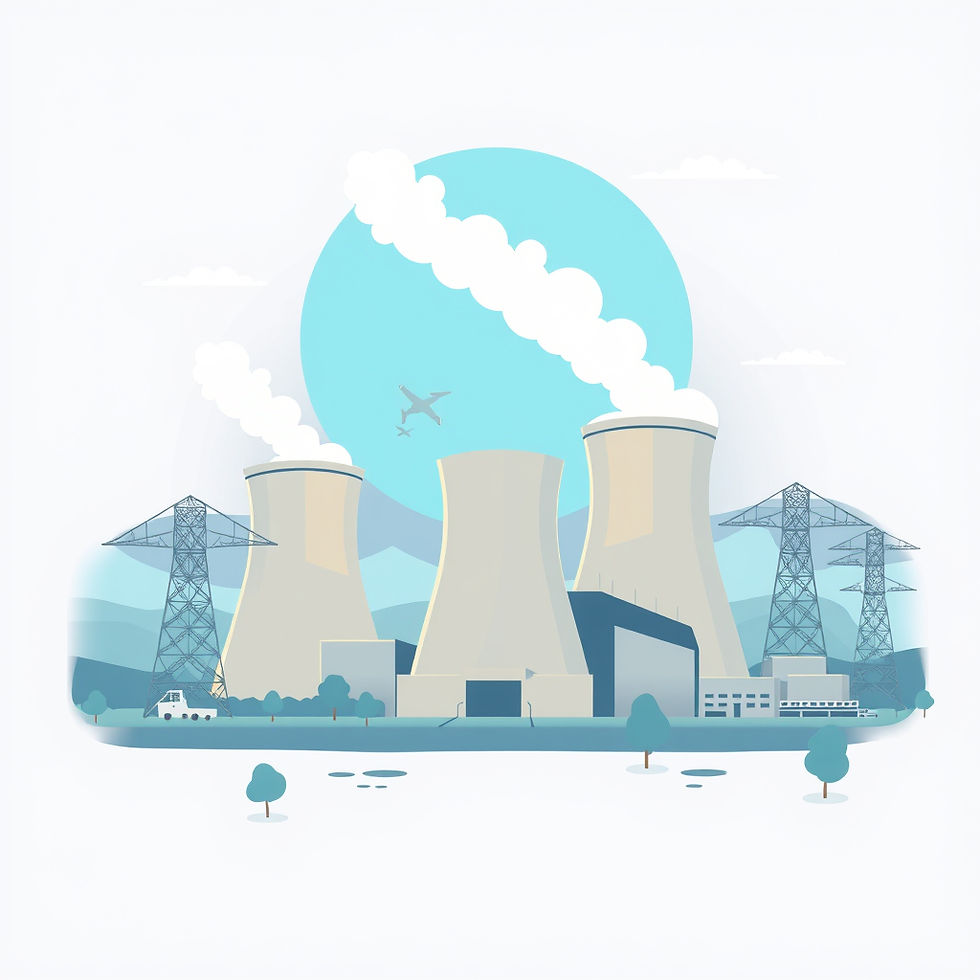Nuclear Legislation Passes: What It Means for the Solar Industry and the Future of Clean Energy
- Sam Mudd

- Aug 1
- 3 min read

In a rare show of bipartisan support, the U.S. Senate just passed a sweeping energy bill with an 88–2 vote — and while the headlines spotlight its implications for nuclear power, the ripple effects could influence the entire clean energy ecosystem, including solar.
This legislation accelerates the approval process for building new nuclear plants, reduces licensing fees for utilities, and directs the Nuclear Regulatory Commission (NRC) to simplify environmental reviews. It also includes provisions from the Trump administration’s earlier push to "unleash American energy," including plans to triple the nation’s nuclear output by 2050.
So what does that have to do with solar? Quite a bit.
A Signal That Clean Energy is No Longer a Side Conversation
Whether you support nuclear or not, one thing is clear: the U.S. government is finally treating clean energy like an urgent priority. This bill puts real infrastructure, real incentives, and real deadlines into motion — and that momentum benefits the entire clean energy sector.
For years, solar power has been carrying the torch — not just because it's clean, but because it’s fast, scalable, and cost-effective. Now, with nuclear being pulled off the bench, the entire energy transition is gaining steam. That’s good news for homeowners and businesses looking to get ahead of the curve.
Nuclear Is Long-Term. Solar Is Right Now.
Nuclear projects take decades to develop and build. Even with fast-tracking and executive orders, the NRC expects many small modular reactor (SMR) proposals won’t generate power until the early 2030s — at best. Meanwhile, solar can be installed on your roof in under a month and start generating clean electricity immediately.
If anything, this legislation highlights the need for distributed, local energy solutions — like rooftop solar — that can fill in the gaps while large-scale infrastructure plays catch-up.
The Grid of the Future Needs Solar
Nuclear provides baseline power. But solar answers the demand for flexibility, decentralization, and resilience — all critical traits for the modern grid. As nuclear builds out centralized plants, solar can lighten grid strain, stabilize prices, and reduce dependency on fossil fuels during peak demand.
And here’s the kicker: the same budget package that supports nuclear development retains tax incentives for solar as well — at least through the end of 2028. That means now is a strategic time to invest in solar while incentives are still on the table.
The Role of Solar in America’s Energy Independence
This legislation reflects a growing desire to reclaim America's leadership in energy production. In the past, delays and rising costs handed the nuclear crown to China. That should be a wake-up call for every sector — including solar — to scale up and innovate.
For solar, that means:
Advancing battery storage to complement nuclear and other renewables
Accelerating grid-tied residential and commercial systems
Supporting policy frameworks that reward consumers for generating their own power
Bottom Line: Solar Isn’t Going Anywhere
While nuclear headlines dominate, solar continues to be the most accessible, affordable, and actionable clean energy solution today. The Senate vote might be history-making for nuclear, but for solar, it confirms what we've known all along: clean energy is the future — and the future is now.
At Midwest Solar Installers, we’re committed to helping you be part of that future today. Whether you're looking to reduce your bills, increase your energy independence, or take advantage of federal incentives before they expire, there’s never been a better time to go solar.
Book a free consultation today!




Comments